
Types of the 2¢ Washington
Type III
Also See: Quick and dirty guide to the Types of the 2¢ Offset Washington
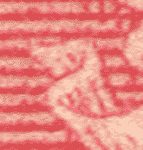
1. Left Ribbon
Two lines of shading at the end of the left ribbon. This is a defining feature of the Type III stamp. This feature is the one that most U.S. collectors examine first to separate the Type III stamps. If there is 1 line of shading it can not be a Type III. Conversely, if it has 2 lines of shading, it must be a Type III.
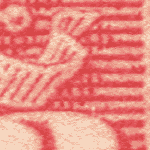
2. Right Ribbon
Two lines of shading in the last fold of the right ribbon. This is sometimes easier to detect than the left ribbon.
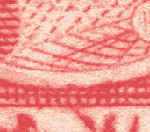
3. Toga Rope
This is not a determining factor in the Type III, although, in general, it resembles the Type II much more than the Type I in this regard.
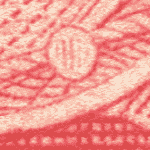
4. Toga Button
This is not a determining factor in the Type III, although, in general, it resembles the Type I more than the Type II in this regard.
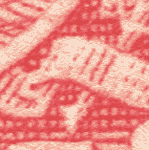
5. Middle of Right Ribbon
This is not a determining factor in the Type III, although, in general, it resembles the Type II more than the Type I in this regard.
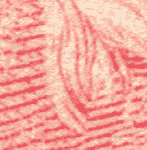
6. Line Between Cheek & Sideburn
This is not a determining factor in the Type III, although it usually shows some joining of the lines at bottom, as in the example above.
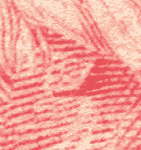
7. Line Under Ear
The white line under the ear is barely seen in the Type III stamp. The horizontally printed lines below the ear are nearly intact. Compare with Type I and Type II.
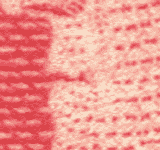
8. Shape of Mouth
The line of the mouth curves slightly downward, particularly pronounced in the corner. This is a typical Type III, it may be more exaggerated in some.
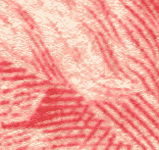
9. Locks of Hair
The bottom two locks of hair extend beyond the vertical lock of hair just to the right of them. This is another defining feature of Type III stamps.
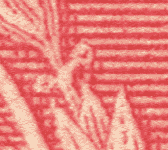
10. Top Right Laurel Berry
The top right laurel berry forms a "v" taking on the appearance of an artist's distant bird in flight. This is a defining feature of the Type III stamp.





